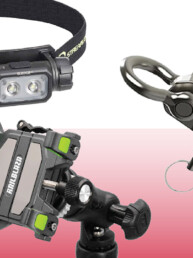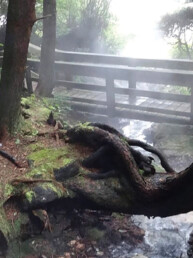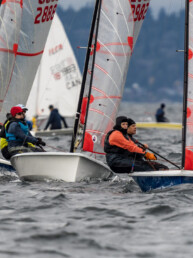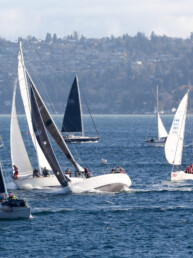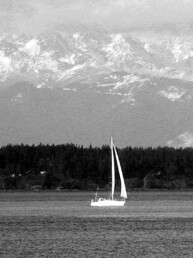Sailors’ journeys out to sea, whether for hours or years, begin with the call to turn the boat head to wind and raise the sails. Then, with the sails set, we trim and steer into that magical groove where our boat and crew are in concert with the wind and the water. Invariably, though, lines can get caught up, the seas can get confused, and the skies dark.
Searching for a new boat can follow a similar trajectory, with exciting beginnings, blissful moments of full sails and smooth seas, and plenty of uncertain times. Voyaging and boat shopping are tiresome, serendipitous, and totally worth it. Such was our family’s adventurous search for our fourth and forever boat.
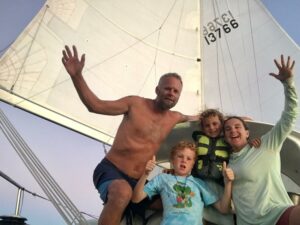
My husband, Mike, and I have owned multiple sailboats and sailed thousands of miles together — the most recent was our beloved Arrow, a 1973 Carter 37. Our kids were 6 months and 3 years old when we bought Arrow. We loved cruising her throughout the Pacific Northwest, and eventually down to Mexico and Panama. The kids are now 8 and 11, and Arrow’s 37 feet began feeling not quite as spacious as it once did. The thought of looking for a larger vessel to sail and call home kept coming up more frequently.
Like many sailors, we made mental and physical lists of what we wanted in our next sailboat. We set filters to our search and lost ourselves for hours looking at boats for sale on the internet. This past summer while living on land in Washington and Oregon, refreshing our cruising kitty, we decided to take our search to the next level and actually tour boats in person.
We started with a boat that had caught and held Mike’s attention two years prior — a 1980 Skye 51, which is a stout, capable bluewater performance cruiser with considerably more living space than Arrow. For years we had only seen pictures and read accounts, because there were so few of these boats built and they were far away. This summer, we found two on the market and one was close enough that we could actually get aboard for a tour. With mounting excitement, we pulled into the boatyard to the sound of halyards slapping and a rush of salt air. We met the broker and followed him aboard a boat that we thought checked some of our most important boxes: seaworthy, fast, and roomy. In the end, this tour added an important item to our list that we had previously taken for granted — headroom.
Shortly thereafter, we boarded and fell in love with a 1974 Olympic Adventure 47, built in the same shipyard in Greece as our Carter 37 — we swooned. From the outside, the OA47 was chubbier than anything we had ever considered. However, this boat took us by the shirtsleeve and impressed upon us the amount of space this hull shape afforded. With 48 feet of length overall and a 14.25-foot beam, the living and working space was incredible. There was an engine room, a work bench, a spacious galley, a generous navigation station, three cabins, lots of storage space, and two heads. The OA47 showed us that we could have space to live, work, and play without going over 50 feet.
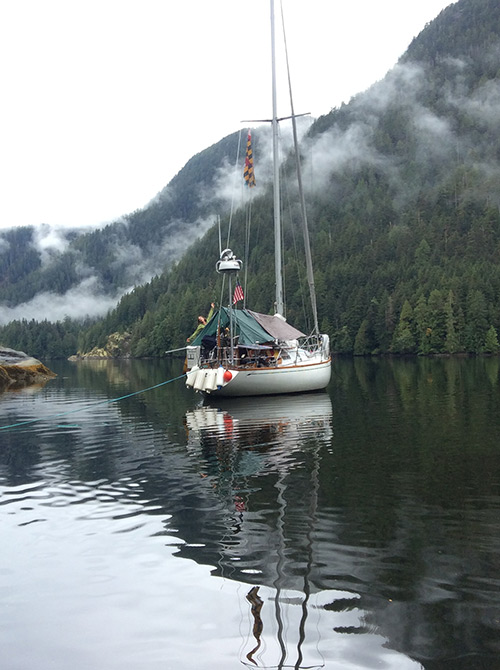
All the comforts of home aside, we are dedicated sailors and spent time investigating her sailing capabilities. We found and wrote to other OA47 owners to talk with them about how the boat sails, and ran her numbers on Sail Data comparing the OA47 to a host of boats side by side. By the numbers, the OA47 looked better than we expected. We reached out to her famous designer Ted Brewer, who even wrote us back. He wrote that the Olympic shipyard where this boat was built “did the best job of all his production boats… The vessels performed very well although they were designed as a true cruising boat.”
“Great!” We thought, “Could this boat be the match between performance and liveability we were looking for?” By the calculations, conversations, and theories, she seemed very promising, especially after initially focusing on sportier designs. With bated breath, we put earnest money down on this 47-foot ketch thinking: “She has a new engine, a new generator, new standing rigging, and the beginning of a facelift down below. She needs some work, though nothing we can’t handle, and has room for our family of four to grow.”
Though we had invested significant time and energy into researching this boat’s sailing capabilities, no amount of data could trump our experience on the water. We were ultimately interested to know how she sailed. Finally, the day of the survey and sea trial arrived. The wind was 10 to 15 knots with gusts in the high teens, the sun was shining, and the sea had a light chop — ideal conditions for the sea trial we were excitedly hoping to hang our hats on.
The boat was being run by the owner and the tactics for the sea trial were being called by one of the two brokers. One broker said, “Let’s head up into the lee of the headland, turn head to wind, and raise the sails. Then we can ease out into the bay and see how she handles.” Heads nodded in agreement and the bow rotated. Midway through this rotation the bow met the fresh breeze head on. The other broker said exuberantly from the cabin top, “We are head to wind now. Let’s go.”
From here, the sea trial went downhill quickly. The boat was not rigged to sail efficiently; the mainsail was difficult to raise, the sheet leads were off, and the outhaul was out of commission. We simply could not get the mainsail to trim nicely. Searching for an alternate setup, we lowered the main, pulled out the headsail, and raised the mizzen to see how she handled being sailed by jib and jigger. Pulling the jib out on the starboard side, the sheet leads were such that we again could not properly trim the sail. Looking to port, we moved the cars along the track for a fair lead, tacked, and set the jib on the port side. We trimmed both sails and turned dreamily towards the San Juan Islands with a collective and enthusiastic feeling of freedom on the horizon.
And then… “BANG!”
The backstay to the main mast parted aloft with a sharp and eerie echo, followed by the slow collapse of 50-some feet of braided stainless wire. The broken toggle at the head of the backstay hit the water aft of the stern before anyone knew what happened. With clambering heartbeats, we counted heads, pulled the backstay onboard, furled the jib, and lowered the mizzen sail. It was time to turn back and park this dreamboat in her slip. This sea trial was over.
We decided this boat was not what we were looking for. Searching for our new boat was proving to be a very emotional and difficult sideshow to our otherwise full life working overtime and supporting our family. With each boat we pursued, we appreciated more fully what we had in Arrow and what we wanted in our next boat. Our family unanimously agreed, “We have a properly maintained, well outfitted boat that we know, love, and call home. She is a tight but comfortable fit. She is a nimble, fast, and capable sailing vessel.” We questioned whether the search for more length on deck and more room down below was worth it, or even necessary. But we did not want to move backwards, so we persisted.
Soon, I came across another boat that piqued my interest — a 1985 Alajuela 48 located in Mexico that was for sale by owner. Informed by recent experience, we moved methodically and at a snail’s pace. I sent the link to Mike, and wrote the owners a few questions that tumbled into much back and forth. With every answer and conversation, we became more and more enthralled.
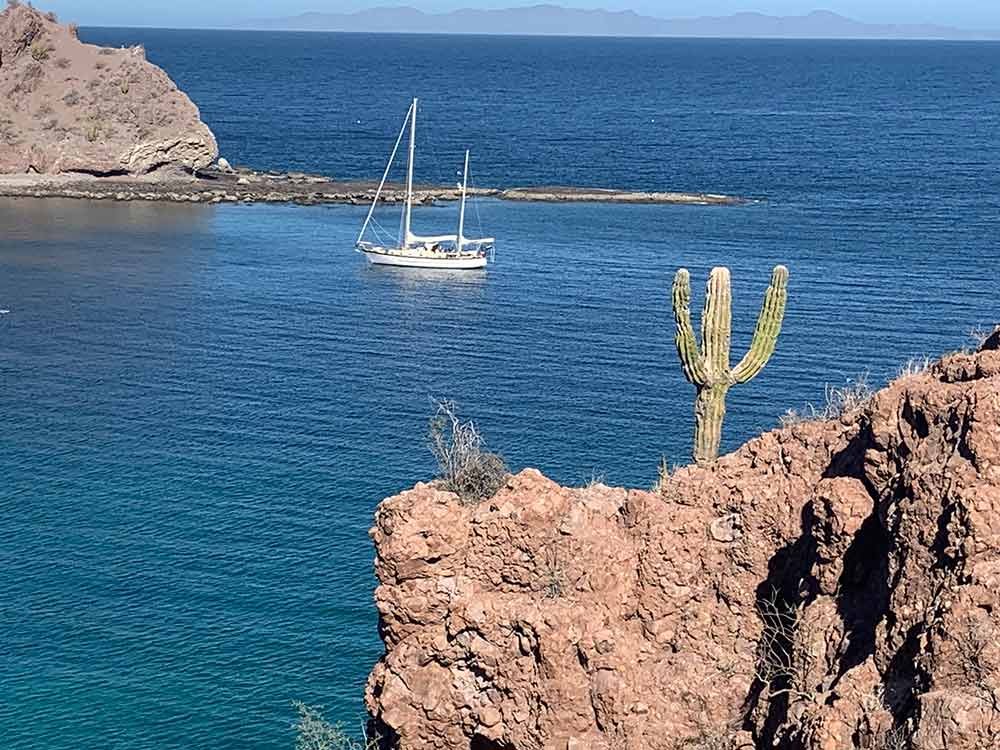
Above the waterline the Alajuela had traditional lines, and below the waterline she had a more modern fin keel with a partially skeg-hung rudder. She boasted three cabins. She was well built, had been sailed, upgraded, and maintained regularly, and appeared to be in excellent condition inside and out. Along with all of that, she also appeared to suit our desires: fast, bluewater capable, and comfortable.
Nestled by the fire in Hood River, Oregon, contemplating this boat and the possibilities, my heart skipped a beat. I said eagerly, “Mike, I think we need to go to Mexico.”
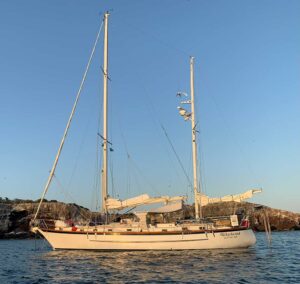
Her name is Whirlwind and we quickly got caught up in one. The sound, “Whirlwind” is delightful, even whimsical; but as a weather phenomenon it is something you don’t want to endure. “Yikes! What are we doing?” we thought with mounting excitement and trepidation. “The boat looks incredible and we can always change the name. Besides, what’s in a name anyway?” A lot, it turns out…
It was time to put our heads to wind again to see if this boat was ‘The One’. We researched, worked longer hours, arranged an international trip over a long weekend during Covid, and dropped our kids off with dear friends for what was supposed to be 5 days but turned into 7 due to travel lift delays and a missing airplane part.
In Mexico, we met the owners, and surveyed the rig, the boat, even the local tacos. We took her for a sea trial, and knew… this was the boat for our family. From start to finish, the trip to see Whirlwind was the best kind of whirlwind. We began to warm-up to the idea of her name as we readied ourselves to be the ones raising her sails indefinitely.
The sellers were her second owners and had her for more than 20 years. They were not too quick to sell her to the first bidder, and we found ourselves seriously wondering if we would be allowed to buy her. Thankfully, they came to trust that we’d do well by her and honor all their hard work. They passed us the torch and the keys to Whirlwind, and we know that owning this boat means being her steward.
Sailing, and the cruising life in general, is not all dolphins, sunsets, and following seas. The challenges, though often remarkably uncomfortable, provide equal rushes of unpredictability and exhilaration. Making the leap from our 37-foot Arrow to the 48-foot Whirlwind has been all of the above and then some, and not only because of the boat search. We left our boat/home in a distant port, set up a temporary home in our shop on land, and slept in guest rooms in generous friends’ homes. We worked overtime constantly. Our only vehicle was stolen, and our house was buried in snow. To finish our jobs and get to Whirlwind, we bought a used van to replace the stolen truck. Though it checked out with multiple mechanics, the fully loaded van died on I-5 south of Portland en route to Whirlwind. Undeterred, we transferred our possessions to a rented van, and then again to a friend’s truck — all to stand with grand excitement alongside Whirlwind.
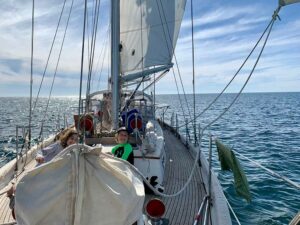
Many times we reminded ourselves that we did not have to go through all this; we were more than fine with what we had. And yet we were ready for the leap. Ready to put our heads to wind and raise the sails on a bigger boat. We had set our minds to this and we persevered, but it took a great deal of good humor, flexibility, and determination. And we did it, we made the leap from one boat to another. This, in and of itself, was an unforgettable adventure, and it’s most certainly the beginning of many, many more.
Maurisa lives and sails with her husband and two kids aboard an Alajuela 48 ketch Whirlwind. Their first born was but a peanut when sailing became a family adventure. Boat by boat, they have put many miles under a handful of keels throughout the Salish Sea and down the Pacific Coast to warmer latitudes.
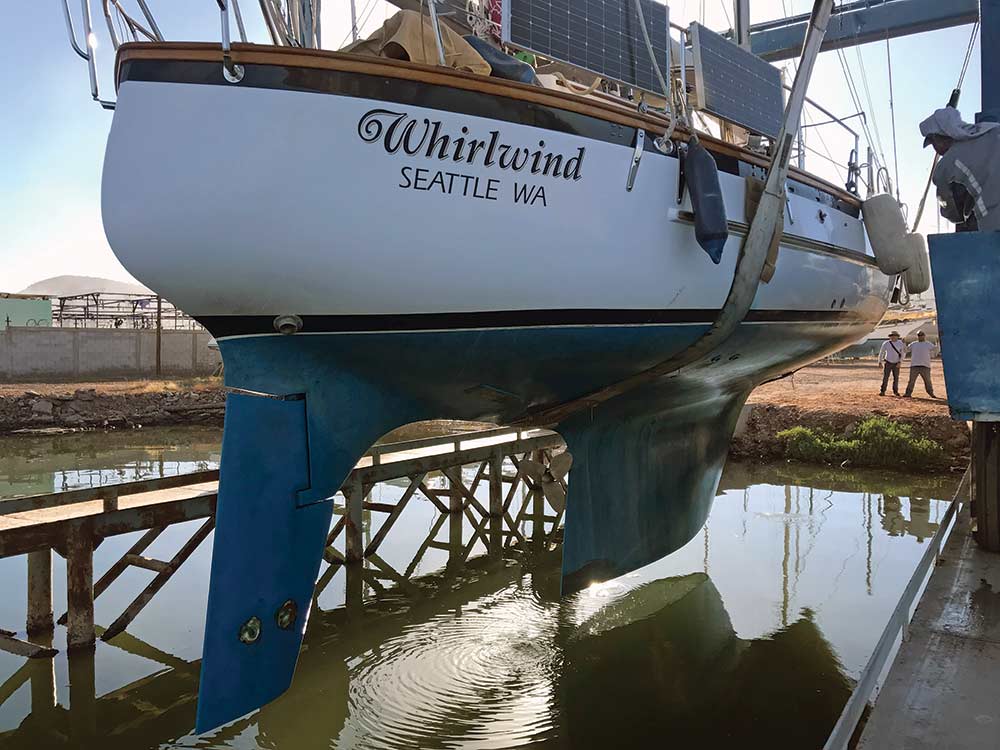
Looking back:
What helped us through this process? What did we learn?
- Having Patience: There is a lot involved in the transition, and we were determined not to settle on something. Rather, we held to the fact that we loved the boat we had and knew that the right boat was out there somewhere.
- Making Lists: We made lists, lots of them. No boat would check all the boxes on these lists, but it was worthwhile to see what boats checked the most boxes.
- Holding Fast: Throughout the process, we held fast to the premise that checking the most boxes would help us weed through many, many boats. And it did. But we knew compromises would be needed…
- Compromising: Honestly discussing the potential trade-offs of each boat was crucial. Since we were buying a boat for the long haul, there were things that we were not willing to compromise on and others where we could be flexible in order to stay under a certain length and budget.
- Learning and Reaching Out: We learned a lot while researching and then looking at different boats. We endlessly compared specs, we found and inquired with online groups dedicated to particular boats, emailed designers and owners with questions, and leaned on knowledgeable friends for help.
- Budgeting “Purses”: Knowing our budget was vitally important and allowed us to tailor our search within reasonable parameters. We brokedown the overall budget into a purse to buy the boat and a purse for post-purchase projects and outfitting. We changed these purses based on the boat we were looking at, as some boats cost more upfront and less upon purchase, others cost less upfront and more upon purchase.

